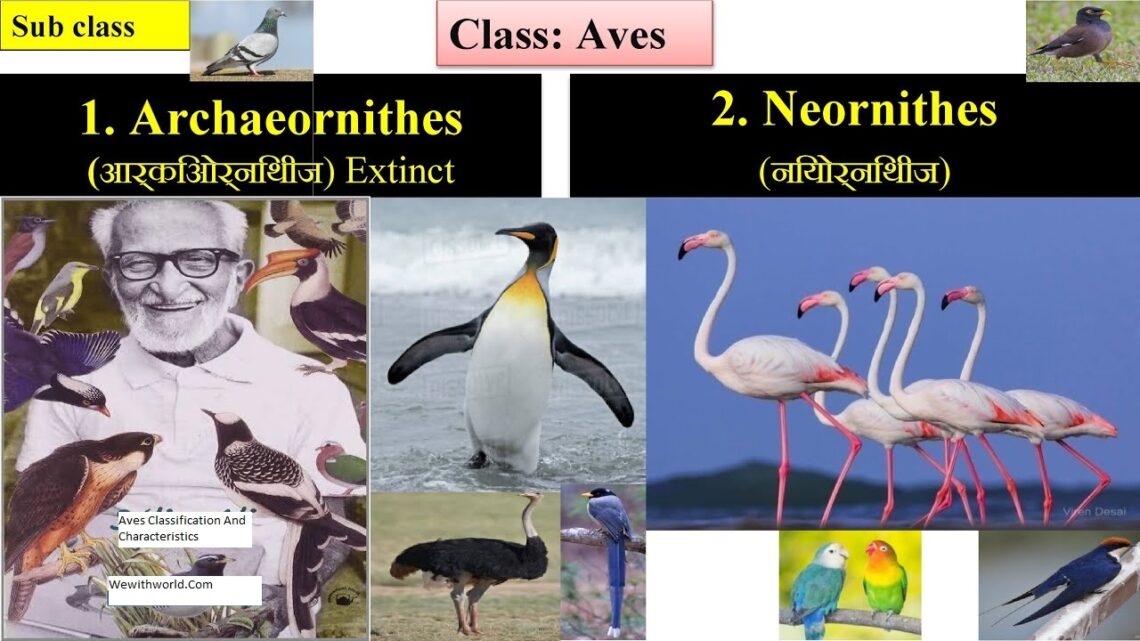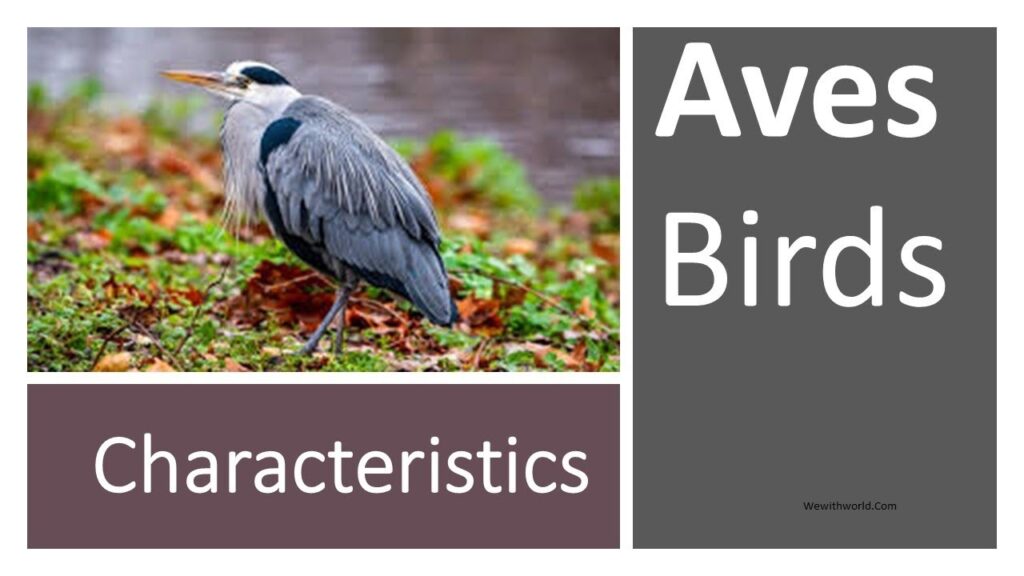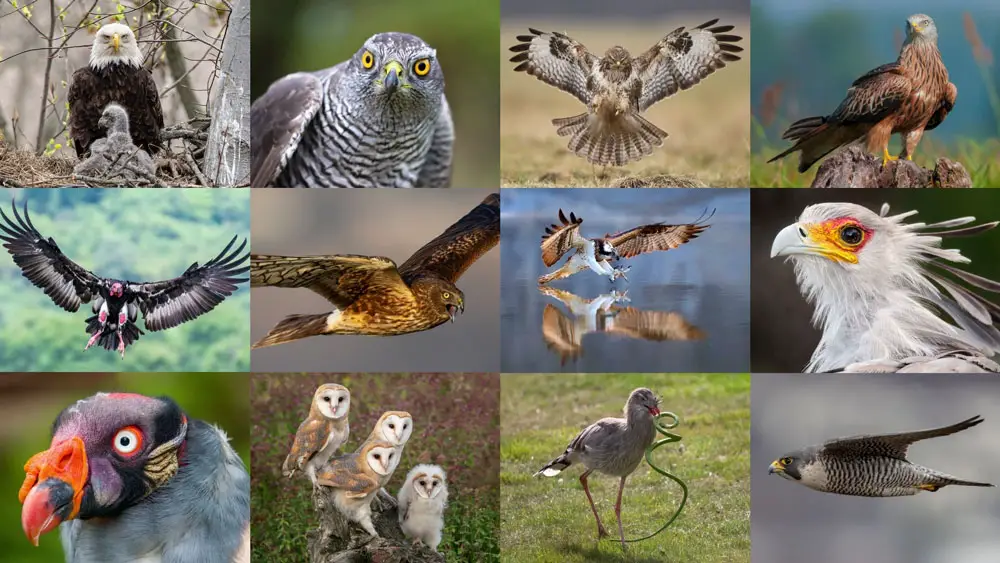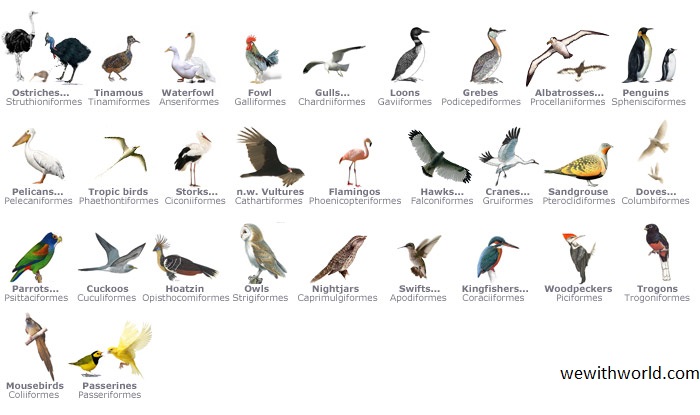
Aves Class and Classification and Characteristics of Aves
Welcome to We With World. Today we’ll discuss about the Birds. specially class of Aves and it’s Classification and Characteristics of Aves with Scientific methods.
Description Of Aves

The Aves belong to the phylum Chordata of the animal kingdom. It has about 9,000 species. Aves are adapted to fly. All the birds come in the class Aves. They show courtship, parental care, nest building, and territorial behavior.
“Aves” is a biological class that includes all species of birds. Birds are characterized by feathers, a beak, laying hard-shelled eggs, and having a high metabolic rate, a four-chambered heart, and a strong yet lightweight skeleton. There is a remarkable diversity of bird species, ranging from small hummingbirds to large birds of prey, and they inhabit various environments worldwide, from forests and deserts to oceans and urban areas. Birds play crucial roles in ecosystems, contributing to pollination, seed dispersal, and controlling insect populations. Some well-known examples of birds include eagles, penguins, parrots, and sparrows.
Characteristics of Aves

- Birds are warm-blooded animals.
- Their forelimbs are modified into wings.
- They have well-developed flight muscles that help during the flight.
- Their hind limbs are adapted for walking, hopping, perching, grasping, wading and swimming.
- There are epidermal scales on their legs.
- The endoskeleton is bony with long hollow bones filled with air cavities. known as pneumatic bones.
- Their spindle-shaped body minimizes resistance of the wind.
- The feathers help in preventing heat loss and reduce air friction by providing passage to the air.
- There is no skin gland except the oil gland.
- The lower and upper and jaws are modified into a beak.
- They have no teeth.
- They have sharp eyesight.
- The alimentary canal has a crop and a gizzard. The crops help in softening food, and the gizzard helps in crushing the food.
- Pigeons and other seed-eating birds lack a gall bladder.
- They have spongy and elastic lungs for respiration.
- The special vocal organ called syrinx is present at the base of trachea.
- Their heart is four-chambered.
- RBCs are oval, nucleated and biconvex.
- 12 pairs of cranial nerves are present.
- They have a single ovary and oviduct on the left side
- All the birds are oviparous and exhibit sexual dimorphism. The
Classification of Aves

The class Aves is divided into two categories:
Archaeornithes
This class of birds are extinct. They had a toothed beak with a long lizard-like tail.
Eg., Archaeopteryx
Neornithes
These include extant as well as extinct birds. They have no teeth and a short tail.
Eg., Penguin, Grey Heron, Kingfisher, Duck, etc.
